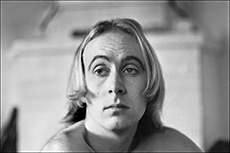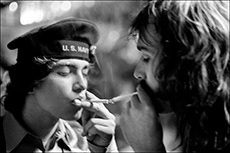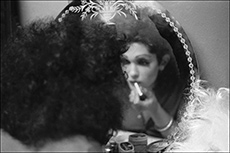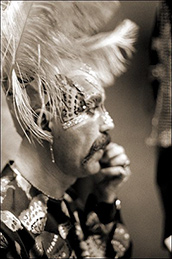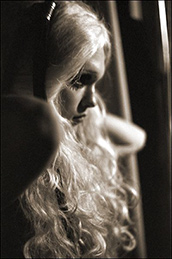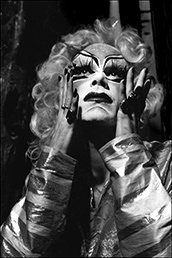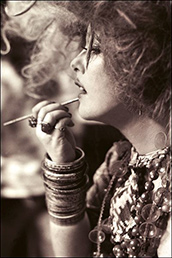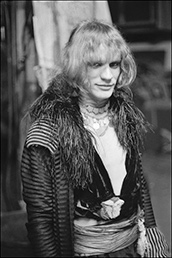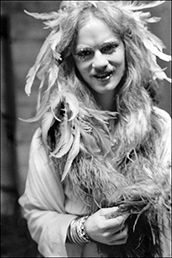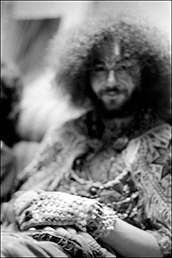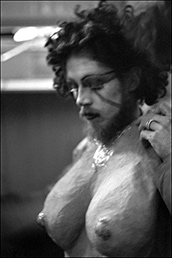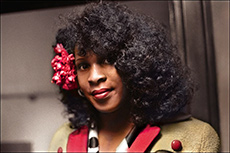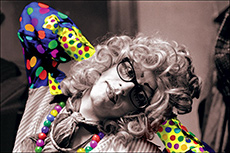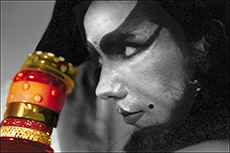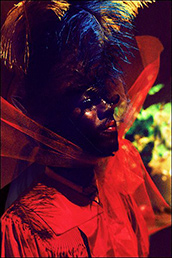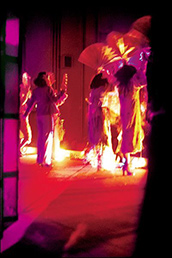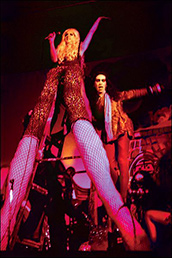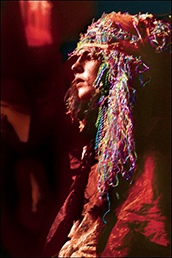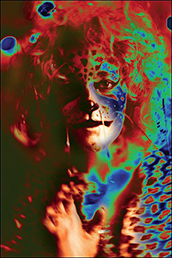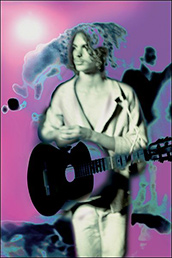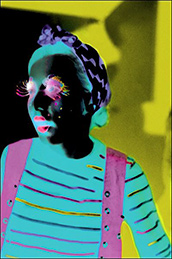|
|
|
|
|
|
|
|
|
|
||||||||||||||||||||||
|
|
Return to the Photography Gallery | |||||||||||||||||||||||||||||
Recalling 1972 by photographer Roger Arvid Anderson, 2011The Way I See It"It's an odd thing, but anyone who disappears is said to be seen in San Francisco. It must be a delightful city and possess all the attractions of the next world." Oscar Wilde There's a time to be young and a place to be young. In the Twenties of the last century, if you had the means and the audacity, you found a loft on the Left Bank of Paris. For a brief moment in the early Thirties you took a table in a cabaret in Berlin. After the war in the Forties you sat on the stoop of a Brownstone in the new capital of the world, New York City. In the Fifties if life was sweet you splashed in a fountain in Rome. In the Sixties you were more Mod than modest on Carnaby Street in Swinging London. In the Seventies you were meant to vanish in a puff of smoke and reappear as someone else in the city of love, psychedelic San Francisco. I was twenty-five, with two degrees, and admittedly restless when I made the cross country move from Cambridge, Massachusetts in January of 1972. My first friend in San Francisco was another immigrant, so to speak, but he was from North Carolina. His name was Armistead Maupin and he came from an old Southern family. He lived in the next block of Union Street where he occupied a tiny studio apartment that had been built on top of the roof. It had a vast view of the Bay and was one of most charming cubbyholes imaginable for a budding writer. If anyone was born to spin stories, it was Armistead. He kept me enthralled with his nocturnal adventures and humorous anecdotes, which eventually emerged in 1976 as a newspaper serial called Tales of the City. I however was born to draw. It was my goal in those days to keep a visual record of the people I met. Since Gold Rush days San Francisco has been noted for its colorful characters. Armistead and I felt right at home. Raw material was everywhere. In fact while sketching Armistead I told him I was just as interested in eccentric costumes as I was in people. He immediately suggested that I should go and see a theater troupe that was seriously ridiculous called by the campy name, the Cockettes. Not only did they have a reputation for being fabulous, he assured me that they were also madcap: utterly, irredeemably madcap.
Luckily the Palace Theater was in the neighborhood. That weekend I made my way down the hill to Washington Square. I brought my sketchpad and got a balcony seat for A Journey to the Center of Uranus. I still have the poster. In fact, I still have the sketches I dashed off of Divine strutting onstage, looking not only suitably alien but voracious, dressed in a jungle-red crab outfit with a long tail and giant padded claws. The house went absolutely ballistic when he sang, "A Crab on Uranus Means You're Loved!" I learned that night I was not a quick-sketch artist. I really needed someone to sit still and take a pose. The Cockettes had a youthful energy that was also just as energizing. No one onstage or offstage sat still for long. Many in the audience were as dressed up as the gaudy actors on stage. The commotion was insane: the hoots of laughter, the roar of applause, the pounding of feet. The theater was also blue with curlicues of smoke that reminded me of the 4 a.m. bus from Fez to Marrakech where the hashish drifted amid the goats and chickens as glassy-eyed I watched the sun chase away the stars. In March of 1972, with more stars in my eyes, the Cockettes opened a new show called Hot Greeks, with a script by Martin Worman and music by Scrumbly Koldewyn. It was a send-up of the Hollywood college musicals of the late Thirties interpolated with the ancient Greek play Lysistrata. This time I thought to bring a camera and station myself early at the stage door. I was still a skinny and weedy Minnesota blonde. Goldie Glitters, in casual street drag, was carrying a make-up case with a dainty handle when he spotted me. "Do you want to take my picture?" He didn't bother to wait for an answer. He smiled at me, then pursed his lips and told the guard at the door. "He's with me!"
If Goldie was my miraculous patron, he was also more than happy to stand still just long enough for me to set up a number of great angles, which allowed me to give him, what I call the glamour treatment. As he introduced me around to the cast I told them to regard my shoot as if it were a fantasy shoot for Vogue. "Seriously, no hugging each other and please, no smiling!" In May of 1972 the Cockettes revived for the third time, Pearls Over Shanghai, with a script by Link Martin and music by Scrumbly Koldewyn. Once again I waited by the stage door and Goldie got me in for another round of backstage vignettes. The Chinese costumes were elaborate and often authentic. Scrumbly in the part of street waif Lili Frustrata posed for a number of shots in a variety of headdresses shifting from one delicate hand gesture to another. Link Martin played Madame Gin Sling with a jewel studded cap. Billy Bowers bobbed about as Chop Chop in a tall fur hat topped by a long solitary pheasant feather, Yet I have to say as glamour goes, the camera was totally in love with Johnny who played one of the three Wobbling Robin sisters. His androgynous beauty was as arresting as it was devastating. He didn't have a bad angle. I snapped shot after shot. "You just can't get enough can you?" In the summer of 1972 I went to the Civic Center by City Hall to photograph an Angels of Light show. Hibiscus, who had been the founding star of the Cockettes, in a fit of pique over charging admission had started another theater troupe, which performed free. I took a few shots as the cast and crew were setting up for what was to be an outdoor event when the show was abruptly canceled. The promoter belatedly realized that the women in the show weren't woman at all, nor was it traditional drag, but men with beards in women's dresses. "Gender-bending" was as radical then as it is today.
In October I again stationed myself at the stage door of the Palace, this time for a performance of Vice Palace. At the very last moment Goldie took me aside and said Divine was being difficult and no photographers were to be allowed backstage. Since everyone was in some sort of Halloween drag, I was more than happy to snap away at the audience in the lobby plus hit on the star-struck stragglers who hung around once the show was over. I did however get an onstage shot of Divine from the balcony. From that photograph you can relish the deliberately moderne details of the set. The Cockettes were quick to raid the past and just as quick to leave in a cloud of smoke. That was their last public performance as a group after a turbulent three-year run. The Cockettes added not only shine; they also added some subversive facets to the meaning of the word "glitterati." The term had been coined in 1956 as a facetious blend of glitter and literati. It was applied to beautiful celebrities or to the more ostentatious members of café society where money was no object. What the Cockettes perhaps lacked in money they made up for in conspicuous consumption, notably their liberal use of glitter. Yes, they were famous and fashionable, and yes, they really did sparkle. However I was not a Cockette, I was a photographer. The word "paparazzi" refers to a niche of photojournalists who specialize in candid shots of jet-set celebrities and movie stars. In Fellini's film La Dolce Vita one of the characters is a news photographer by the name of Paparazzo. By the late Sixties the Italian plural "paparazzi" had come to stand for an aggressive class of intrusive photographers. Vice Palace, the Cockette's last show satirized the world of beautiful people. Divina, a socialite and the name of the venomous lead, was unhappily holed up in her villa, where she lashed out in song: "The paper paparazzi are a plague upon the land, Afflicting us at ev'ry turn with cam'ras in their hand." Another character was a filmmaker in a white suit and hat, and was lampooned as Federico Fellatio. Even the costumes looked like they came from the Cinecitta studios in Rome. No wonder the real Divine wouldn't let any photographers like me backstage: I was a paparazzo!
No denying it, yes, I was a paparazzo and yet, there's no denying the Cockettes were your original "in your face" photogenic exhibitionists. They were catnip for the press. The front row of the Palace was always crowded with photographers. In fact they danced as much under the stage as the Cockettes danced on the stage. For the most part I was backstage. I also photographed the audience members. All in all, it was your "true blue" stage-struck milieu and that's just what I was after. If anything I was not only a witness to the zeitgeist, I was also a participant. I was not outside the counterculture looking in. I was inside looking out. I never regarded my shots of the Cockettes as just a social document taken by a curious bystander. I always considered my negatives as a medium for a poetic vision. The Palace was my Moulin Rouge and San Francisco was my Berlin. Then the moment passed, but not forever.
During the Nineties as we approached the new millennium I watched the encroaching digital revolution with great curiosity. Many traditional photographers were suspicious. Nevertheless, I was among the first in San Francisco to approach a digital specialist for help, as I wanted to exploit Photoshop in hopes it could color-correct my Cockette slides. The 35mm color film I used backstage was outdoor film and the indoor lights caused the film to turn an acid green. We ran a test and got rid of about half the green, but it still remained a shade too green. The specialist told me to wait a few years as Photoshop's abilities were growing exponentially. In December of 2004 I attended Pam Tent's reading from her book: Midnight at the Palace, My Life as a Fabulous Cockette. That evening Scrumbly, Kreemah Ritz and Fayette were also in the audience, all of whom I had photographed in 1972. Once more I was inspired to pull out all those troubling slides and negatives. I then made some inquiries and was introduced to the latest in Photoshop developments. Now the corrected colors were so fresh I nearly cried. I felt as if time had stopped and I was still standing backstage at the Palace in 1972. One triumph encouraged another and I soon decided to colorize some of the B&W images. Before the advent of color film in the Fifties, B&W portraits and landscapes were frequently painted, which was called tinting, often over a sepia-toned print. Sometimes it was nothing more than adding a touch of pink to cheeks or some red to lips. Sometimes articles of clothing were painted with a range of pastel shades. Since the Cockettes clearly looked back to the Art Deco era for inspiration, for both costumes and music, it seemed appropriate for me to do the same as I colorized some of my images in the manner of the Thirties and Forties. In retrospect, what I couldn't do in the darkroom in 1972, or even as late as the 1990's, I could do in the daylight of the new millennium. Photoshop allowed me to paint on the computer screen. It also allowed me to be expressive and inventive as I could now give the images a psychedelic twist. Why? Because after all these years I'm still stuck, I'm still stage-struck. No matter how many millions of pixels glitter on how many millions of screens, the vision remains vintage. They tell me it starts with a dream.
|
||||||||||||||||||||||||||||||
Images and Text © 2012 Roger Arvid Anderson, All Rights Reserved |
||||||||||||||||||||||||||||||
